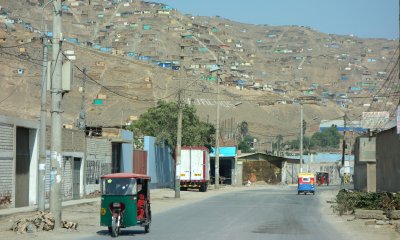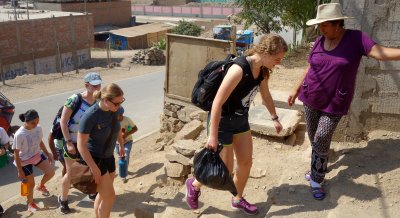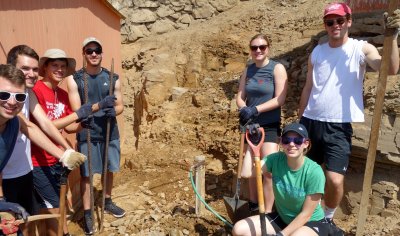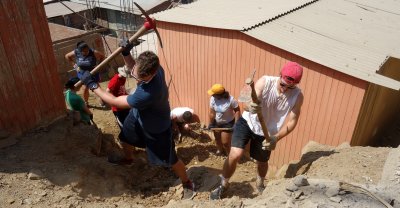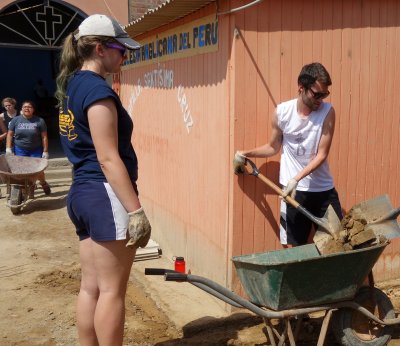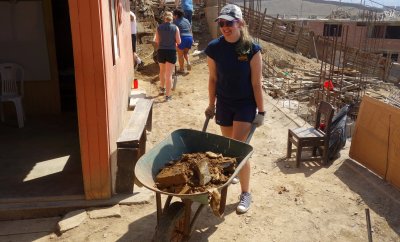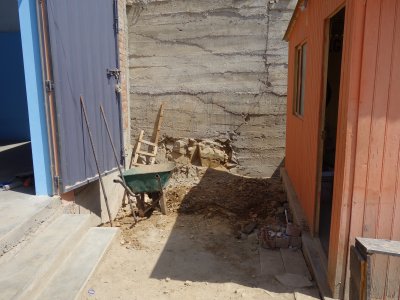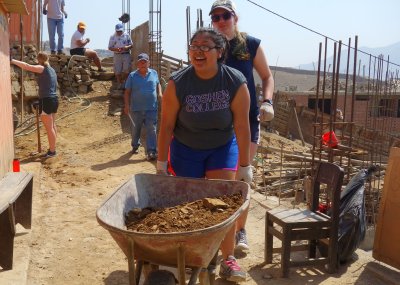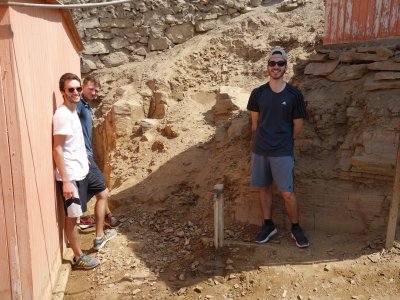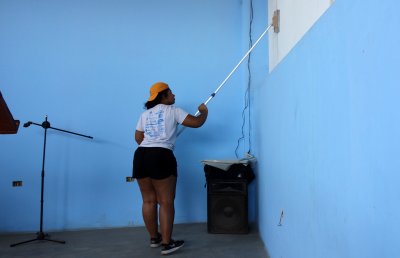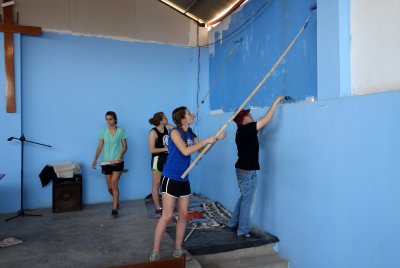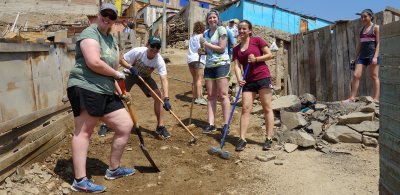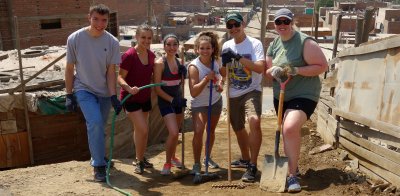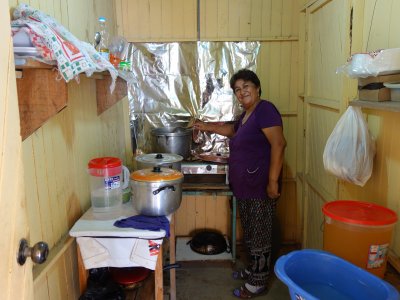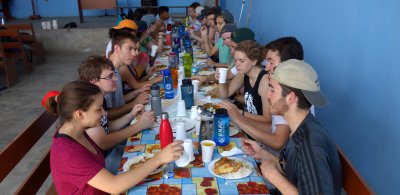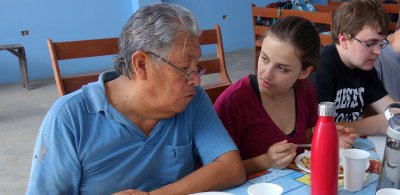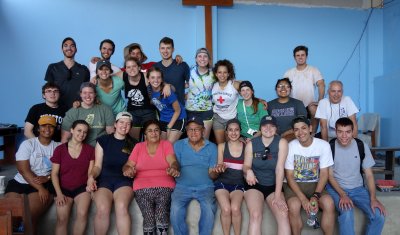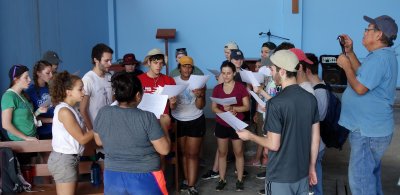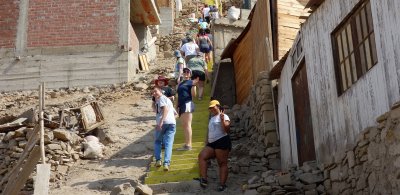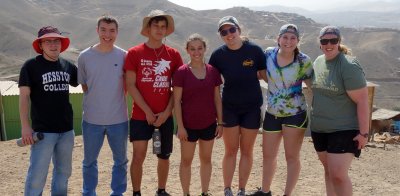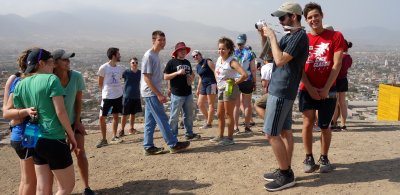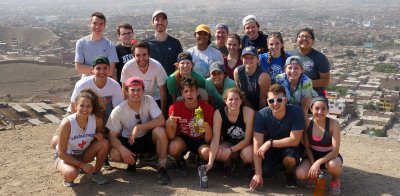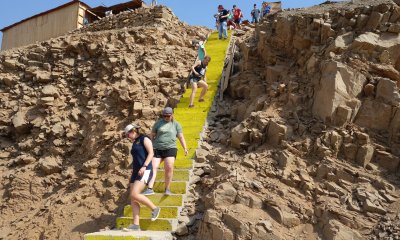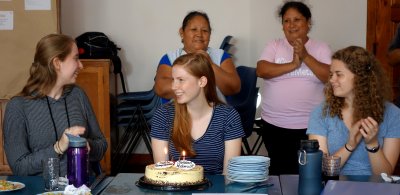Pick-axes, brooms, and paint brushes in the Cono Norte
Friday, May 12.

Today we drove 25 miles north to Puente Piedra, an area more typical of where most people live in this sprawling capital city of 10 million. The outer regions of Lima, known as the conos, didn’t exist 50 years ago when the population of Lima was less than 2 million. Rural poverty and, in the 1980s and 90s, a brutal conflict that began in the Andes brought millions to the capital, causing rapid population growth that urban planning didn’t come close to managing. Vast areas were populated by illegal land seizures, and only years later did basic utilities like water and electricity arrive. Much of this growth occurred on the desert hills surrounding Lima, where shacks are built after carving into the steep inclines of rock and dirt.
Puente Piedra is older than many shantytowns, having been settled long enough ago that today it has water and electricity. We were welcomed by an Anglican priest, Rev. Benjamin, who asked us to continue excavating into the side of the hill, where the Fall and Spring SST groups had also worked, so that the parish church can eventually expand their auxiliary building. We discovered a small part of what it takes for families to build a home in the conos of Lima.
Another group of students did maintenance work on the path of the hill, removing loose dirt and using water to compact what remains so that people won’t slip on the steep incline. A third group of students painted 2 sections of the chapel.
After the manual labor the group was very hungry for our lunch in the chapel, prepared by Livia, the wife of Rev. Benjamin. After lunch we heard some of the history of the settlements in Puente Piedra, descriptions of the violence that rural Andeans were fleeing, the problems local families face, and the church’s ministry to those in the community.
